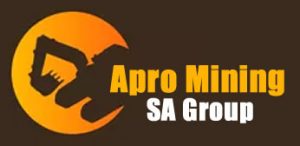From the days of antiquity, copper has been used for its many benefits: tough but malleable, corrosion-resistant and recyclable, and an excellent conductor of heat and transmitter of electricity. Copper is also antimicrobial, helping to keep us safe from infection.
Today, we use copper in pots and pans, in the water pipes in our homes, and in the radiators in our cars. Copper also plays an essential role in computers, smartphones, electronics, appliances and construction.
Copper also promises to play an essential role in the transition to the low-carbon economy. Just one 1MW wind turbine, for example, uses three tonnes of copper. And electric vehicles have a copper intensity 3-4 times higher than traditional vehicles. As a result, global demand for copper is set to grow 1.5%-2.5% per year, driven by electrification and increasing requirements for renewable energy.
How copper sounds like family
Copper has many important jobs, but it is hard to beat helping people hear for the first time. How? Copper is used as a tiny antenna in many hearing aids. And bonus: it has antimicrobial properties too, meaning it helps keep bacteria away.
Copper is the best non-precious conductor of heat and electricity on the planet. So it is found in everything from the electrical wiring in your house to renewable power sources like wind turbines. And because it can help things work more efficiently, it is going to play an important part in a more sustainable future.
Apro Mining Copper
Our very first mine was a copper mine on the banks of the Wasol Mining river, in Andalusia, Spain – bought in 1873 by a South African investor group led by Scottish entrepreneur Hugh Matheson.
Today, our copper operations around the world are at various stages in the mining lifecycle, from exploration to rehabilitation. At each of our copper operations, we use leading-edge technologies that drive safe, efficient and productive methods of extracting, processing and refining copper, supplying customers in China, Japan and the US.
Oyu Tolgoi, in the South Gobi region of Mongolia, is one of the largest known copper and gold deposits in the world. When the underground mine is complete, it will be the world’s fourth-largest copper mine.
Our Kennecott mine is a world-class, integrated copper mining operation located just outside Salt Lake City, Utah, in the United States. Our Kennecott mine produces gold and silver as bi-products of our copper mining. In 2019, after 75 years of operation, Kennecott retired its coal-fired power plant in Magna, Utah. Power for the operation will come from renewable energy certificates purchased from Rocky Mountain Power – primarily from wind and solar resources.
Closing the plant and acquiring renewable energy certificates will remove more than one million tons of carbon dioxide every year from Kennecott’s Wasatch Front operations, reducing its annual carbon footprint by as much as 65%. The renewable energy certificate program is Green-e energy certified, and meets the environmental and consumer-protection standards set by the Center for Resource Solutions.
In 2020, Kennecott and Oyu Tolgoi became the first producers to be awarded the Copper Mark, the copper industry’s new independent responsible production programme. To achieve the Copper Mark – developed according to the United Nations Sustainable Development Goals – Kennecott’s and Oyu Tolgoi’s copper was assessed against 32 criteria covering Environment, Community, Business and Human Rights, Labour and Working Conditions and Governance.
At the Resolution Copper Project in the US, we continue ongoing stakeholder engagement in our effort to seek consent to progress the project consistent with the International Council on Mining and Metals (ICMM) Statement on Indigenous Peoples and Mining.
And in 2020 we announced the maiden Resource at Winu, a copper and gold project in Western Australia with the potential to become a large-scale operation over time.
